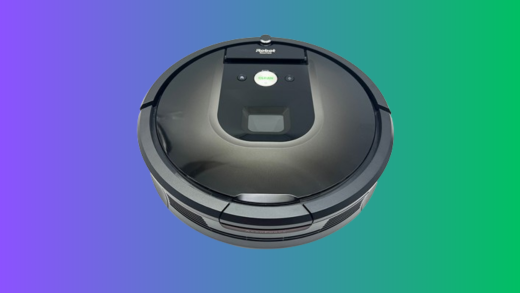JAXenter: Hi Rachel. Could you tell us a little about Heap? How does it help discover “unknown unknowns”?
Rachel Obstler: Heap is the next generation of digital analytics; we use powerful data science capabilities to automate insights from a uniquely complete set of customer behavioral data. Simply put, our tools automatically capture everything on your site/product, then they proactively surface insights that would have otherwise remained invisible to you.
Because of this, Heap’s customers are empowered to be more customer-centric— instead of wasting time searching for insights, they can quickly understand how customers are engaging with their site or product, and see – automatically – what actions they can take that will best optimize the customer experience and most directly move the needle on the business metrics that they care about the most.
SEE ALSO: 10 Benefits of CI/CD for your DevOps Journey
JAXenter: How are traditionally siloed departments shifting? What does this mean for business growth?
Rachel Obstler: I’m going back a few years, but one of the great things about the shift to agile processes is that it’s helped break down traditional organizational silos, and given product, design and engineering a framework for working collaboratively and staying on the same page.
Now Product-Led Growth (PLG) is starting to do the same thing for product, marketing and success. The in-product experience becomes the main interaction between the company and the customer, especially for users that prefer self-service to talking to sales. This requires product and marketing to work together from the beginning to provide a smooth and unified customer experience, from acquisition to activation through to retention. This is something B2C companies have been doing for years, and now more B2B companies are moving in this direction.
The great thing about PLG is its scalability (you are not limited by the size of your sales team). But it requires putting your customer at the center so that their behavior and needs drive how you communicate with them. This requires a different type of analytics; the focus is less on demographics, and more on behavior. Content performance analysis looks not at how often something was visited, but whether or not those visits were correlated to downstream behavior like conversion. In this model product, marketing and success work through the product to not only optimize messages and offers, but also to find more (and better) opportunities to improve the product experience. These activities used to be split between marketing and product; now they’re the shared responsibility of both teams.
JAXenter: What can product teams learn from their developer colleagues? And how can we make that knowledge sharing easier for everyone on board?
Rachel Obstler: One practice I love about DevOps is blameless postmortems. The idea is that when something goes wrong, the team works to determine the cause, which is never a person. If a person (for example) took an action which caused the issue, you ask: why were they able to take the action? What training or controls are missing? How could the system be more resilient to these types of changes? And how do we learn from what happened?
These kinds of practices translate extraordinarily well to product. A key pillar of a successful product-led organization is an experimental mindset, one that involves repeated hypothesizing, testing, and iterating. This means that sometimes experiments don’t work. (That’s why they are experiments!). In order to ensure that teams continue to push on experiments and take risks, it’s important to foster and support a similar culture of blamelessness. This means that every experiment is a learning opportunity to be celebrated, regardless of outcome. Indeed, understanding what doesn’t work is just as important as understanding what does work when you’re iterating on your product experience.
One of the great things about the shift to agile processes is that it’s helped break down traditional organizational silos.
JAXenter: What can you tell us about the disconnect between building digital experiences and the people who experience them?
Rachel Obstler: In a recent Heap survey, we found that 89% of people say “ease of use” is very important or somewhat important when choosing between two websites that accomplish similar goals.
In addition, it seems that product teams hold the same value, with 95% of them saying their site is somewhat or very easy for users to navigate and use.
However, 43% of consumers think the majority of websites are not designed around their needs.
What this tells us is that digital teams think they know about how users experience their sites is very different from what users actually experience— and that is a direct result of subpar product insights. Whether it’s absent data or an inability to surface friction points in user journeys, it’s obvious that product teams just are not getting a complete, unbiased view of their customers’ experiences.
Subsequently, in another survey, we found that only 24% of product teams say they have full insight into the user journey on their site, and only 16% of teams say they actually know why most customers drop off their site.
Given this, we think that the need for customer insights that are grounded in a complete set of behavioral data is more important than ever. We’ve created a new approach that actively shows teams opportunities in user journeys they’re not aware of already.
JAXenter: What are the first steps businesses can take to shift towards proactive analytics?
Rachel Obstler: Shifting toward more meaningful insights means shifting toward proactive analytics. Instead of waiting for the trend and responding in a reactive way, analytics and data science should be pointing you in the right direction.
And the only way to really position your organization to do this is by automating data capture, so you get everything. A complete dataset is an unbiased data set. And when teams are not required to specifically instrument each action, they are instantly in a better position because they’ll have information on both the golden path they expect as well as the paths users take that they didn’t anticipate- this is often where the greatest insight is found.
SEE ALSO: “Data storage cannot be a set and forget exercise”
JAXenter: Could you tell us more about your present job? (company, position, etc) What does your typical workday look like?
Rachel Obstler: As the EVP of Product, I’m responsible for building the roadmap here at Heap. On a daily basis that could mean talking to customers, doing research on the market, reviewing product plans, planning releases with marketing, looking at product performance, and more!
My passion is building a high-performing product team by making sure that we’re communicating and working well with the rest of the organization. When your product (not the team but the product itself) is the predominant interface between your company and your customers, it is essential to build a cross-functional organization that works together to provide customers a seamless product experience.
My passion is building a high-performing product team by making sure that we’re communicating and working well with the rest of the organization.
JAXenter: What are you most proud of in your career?
Rachel Obstler: I like to support women of all backgrounds. In my past roles, I’ve had the opportunity to diversify product teams starting at 25% women to 50%. Diversity of voice is essential for innovation. I hope that this simple action ultimately contributes to more products being built for all ranges of people, genders, and abilities. In tandem, I enjoy mentoring and seeing people progress in their careers.
JAXenter: Finally, do you have any advice for women who want a career in tech? What should they know about the industry?
Rachel Obstler: In my opinion, it’s never been a better time to be a woman in tech—though I still think we have a long way to go in expanding diversity to women of color and other marginalized groups. Considering the odds, here are my high-level pieces of advice to women and other people from groups that are underrepresented in tech.
1. Ask for help and offer help:
Broadly speaking, as women and other minority groups, we trend toward being less comfortable networking and asking others for help, so I always like to flip the script on myself when I personally feel uncomfortable asking for help. I do this by imagining how I would feel if someone asked me for that same type of help. And the way I usually feel is flattered!
In recognizing this common hesitancy, I also try to become more aware of when women and other marginalized folx might also need help but don’t feel empowered to ask for it. Making myself openly available to others is important for not only improving the work but also workplace culture.
2. Figure out and commit to what is really important to you.
For example, if culture is important, or being at a company that is serious about diversity, then find one. Because you can find tech companies that prioritize culture and DNI efforts. If there are other things that matter, like flexibility, working from home, opportunities for advancement, just figure out what makes you happy – that’s the most important first step so when you are evaluating opportunities, you know whether they are meeting your bar.
3. Build a peer group
No one has all the answers. But if you have a trusted set of advisors that you can check in with on a regular basis, that’s a really important foundation to lean on. Everyone runs into situations they haven’t seen before; the mistake is in not asking others for help and advice. Sometimes just talking to two or three people who have seen the problem before makes a huge difference in your ability to find the right approach and create a better outcome.
The post “Shifting toward more meaningful insights means shifting toward proactive analytics” appeared first on JAXenter.
Source : JAXenter
















